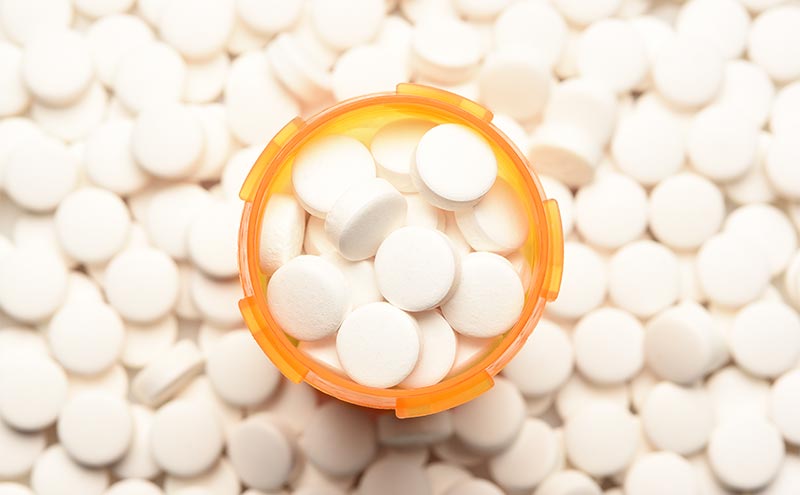
Opioid Overdose Prevention Update
The Emergency Department (ED) is at the forefront of the public health emergency that is the opioid epidemic1 and often a place where patients come for issues both related and unrelated to opioid use.2,3 According to the Centers for Disease Control (CDC) fatal opioid overdose rates increased 27.7% from 2015-2016. This increase in opioid overdose deaths has largely been attributed to the use of illicitly manufactured fentanyl and other synthetic opioids which has variable penetrance across the country. For example, West Virginia has the highest opioid-involved rate of drug overdose deaths (age-adjusted rate is 49.6 deaths per 100,000 persons) and this is largely attributable to the sharp increase in fentanyl-involved deaths.4 ED visits for opioid-related overdose also increased with the highest rate of increase in large urban areas suggesting the need for targeted responses based on community trends and use patterns.2
Polysubstance use is common among persons who use opioids and nearly all people who use heroin report using at least one other drug during the past year.6 While two-thirds of opioid deaths from January to June 2018 involved illicitly manufactured fentanyl, nearly 62.6% of all deaths are linked to at least one non-opioid drug suggesting a high prevalence of polysubstance use in fatal overdose cases.7 Half of methamphetamine-involved deaths also involved opioids in 2017 and the rate of methamphetamine-related deaths increased by 33.3% across the country. Rates of psychostimulant use such as methamphetamine vary by geographic region with highest levels seen in the West. Among patients with opioid use disorder, methamphetamine use is rising8
In a TIPS newsletter from Summer 2015, Dr. Elizabeth Samuels discussed opioid overdose prevention and response.9 Her newsletter appropriately discusses the need to identify patients at risk for overdose including those with suspected opioid use disorder (OUD) or non-medical opioid use. Risks for overdose include using alone, interrupted tolerance, polysubstance use, taking methadone or buprenorphine, opioid prescriptions for pain, or difficulty accessing emergency medical services.10,11 We suggest also including polysubstance use and exposure to fentanyl as critical pieces of information when talking to patients about overdose risk. Emergency physicians should incorporate these important harm reduction messages12 to bolster existing opioid overdose campaigns.
1. Using alone is a risk factor for overdose
Using alone limits options for response to an overdose.
2. Opioids should not be used in combination with other drugs
Among people who inject drugs, injecting heroin and methamphetamine together is associated with higher risk of self-report overdose than those that only inject heroin.13
3. Have naloxone kit
In 2018, the Surgeon General called for medical professionals to prescribe or dispense naloxone to individuals at increased risk for opioid overdose. All emergency providers should know their hospital protocol for dispensing and prescribing naloxone. Even people who report methamphetamine use are at risk for opioid overdose given the large amount of polysubstance use and should have naloxone.
4. Don’t be afraid to call 911
40 states and the District of Columbia have enacted some form of a Good Samaritan or 911 drug immunity law.14 Although some states have laws that protect from a greater extent compared to others, this law protects (not allowed to be arrested, charged, or prosecuted for certain substance possession or paraphernalia) anyone who calls 911 to seek assistance for themselves or someone else suspecting a drug overdose.
5. Medications for OUD as overdose prevention
Buprenorphine can be dispensed from the ED for acute opioid withdrawal and prescribed from the ED by physicians with a DATA 2000 waiver.15,16 Patients with an overdose who receive buprenorphine have decreased risk of overdose compared to patients that did not receive buprenorphine.17
References
- D'Onofrio G, McCormack RP, Hawk K. Emergency Departments - A 24/7/365 Option for Combating the Opioid Crisis. The New England journal of medicine. 2018;379(26):2487-2490.
- Vivolo-Kantor AM, Seth P, Gladden RM, et al. Vital Signs: Trends in Emergency Department Visits for Suspected Opioid Overdoses - United States, July 2016-September 2017. MMWR Morb Mortal Wkly Rep. 2018;67(9):279-285.
- Scholl L, Seth P, Kariisa M, Wilson N, Baldwin G. Drug and Opioid-Involved Overdose Deaths - United States, 2013-2017. MMWR Morb Mortal Wkly Rep2018.
- NIDA. West Virginia Opioid Summary. 2019; https://www.drugabuse.gov/opioid-summaries-by-state/west-virginia-opioid-summary. Accessed Oct 8, 2019.
- CDC. 2018 ANNUAL SURVEILLANCE REPORT OF DRUG-RELATED RISKS AND OUTCOMES. 2018.
- Jones CM, Logan J, Gladden M, Bohm MK. Vital Signs: Demographic and Substance Use Trends Among Heroin Users - United States, 2002-2013. Mmwr-Morbid Mortal W. 2015;64(26):719-725.
- Gladden RM, O’Donnell J, Mattson CL, Seth P. Changes in Opioid-Involved Overdose Deaths by Opioid Type and Presence of Benzodiazepines, Cocaine, and Methamphetamine — 25 States, July–December 2017 to January–June 2018. Morbidity and Mortality Weekly Report (MMWR) Learn More. Accessed Oct 8, 2019.
- Ellis MS, Kasper ZA, Cicero TJ. Twin epidemics: The surging rise of methamphetamine use in chronic opioid users. Drug Alcohol Depend. 2018;193:14-20.
- Samuels EA. Opioid Overdose Prevention and Response. 2015; Learn More. Accessed Oct 8, 2019.
- Banta-Green CJ, Coffin PO, Merrill JO, et al. Impacts of an opioid overdose prevention intervention delivered subsequent to acute care. Inj Prev. 2018.
- Bohnert AS, Bonar EE, Cunningham R, et al. A pilot randomized clinical trial of an intervention to reduce overdose risk behaviors among emergency department patients at risk for prescription opioid overdose. Drug Alcohol Depend. 2016;163:40-47.
- Hawk KF, Vaca FE, D'Onofrio G. Reducing Fatal Opioid Overdose: Prevention, Treatment and Harm Reduction Strategies. Yale J Biol Med. 2015;88(3):235-245.
- Al-Tayyib A, Koester S, Langegger S, Raville L. Heroin and Methamphetamine Injection: An Emerging Drug Use Pattern. Substance use & misuse. 2017;52(8):1051-1058.
- NCSL. Drug Overdose Immunity and Good Samaritan Laws. 2017; Learn More.
- Duber HC, Barata IA, Cioe-Pena E, et al. Identification, Management, and Transition of Care for Patients With Opioid Use Disorder in the Emergency Department. Ann Emerg Med. 2018.
- Babu KM, Brent J, Juurlink DN. Prevention of Opioid Overdose. The New England journal of medicine. 2019;380(23):2246-2255.
- Larochelle MR, Bernson D, Land T, et al. Medication for Opioid Use Disorder After Nonfatal Opioid Overdose and Association With Mortality: A Cohort Study. Annals of internal medicine. 2018;169(3):137-145.
Lauren K. Whiteside, MD, MS
Sophie C. Morse



